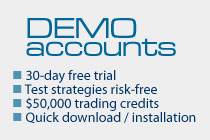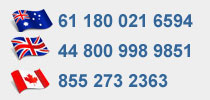 |
|||
 | |||
|
We offer FX, FX Options, Contracts for Difference and Precious Metal trading delivered on the most powerful trading platform technologies. | Forex Factors Forex Rate Systems: Factor that Influence Prices There are basically two types of exchange rate systems: Since the FX market is a pure market, rates move freely up and down, consequently, there are numerous factors that determine a free floating currency’s worth in the market, from international trade flow, economic and political conditions, and the level of interest rates to simple short-term supply and demand. Below is a list of major participants: Banks Historically, banks have been the main participants in the FX market. They still remain the largest players in terms of market share, but transparency has made the FX market far more democratic with all participants having access to the same extremely narrow prices that are quoted in the interbank market. Non-bank financial entities (including real money and leveraged asset managers). New market makers, such as hedge funds and commodity trading advisors, have emerged over the past decade while international corporations have a natural interest to trade on account of their exposure to FX risk. Central Banks Central Banks can also play an important role in the FX market. Retail FX Retail FX has expanded rapidly over the past decade and while precise figures are hard to come by, this sector is believed to represent as much as 20% of the FX market. Forex Essentials As we discussed, one currency is always quoted against another. The “base” currency is the one that can be thought of as the reference. For instance, in a EUR/USD quote, EUR is the base currency and the quote defines how many USD it costs to buy. Similarly, in USD/JPY, USD is the base currency and the rate defines how many JPY it costs to buy. The Bid is the price the market is willing to pay for a certain FX currency pair. The offer, or ask, is the price it is prepared to sell at. For example, in a USD/CHF quote of 1.1650/1.653, the bid is 1.1650, while the offer is 1.1653. Frequently, quotes are abbreviated. In this case, a phone quote would be 50/53. The difference between the bid and the offer is known as the spread. What is a pip? Pip stands for "percentage in point" and is the smallest increment of trade in FX. In the FX market, prices are quoted to the fourth decimal point. For example, if a bar of soap in the drugstore was priced at $1.20, in the FX market the same bar of soap would be quoted at $1.2000. The change in that fourth decimal point is called 1 pip and is typically equal to 1/100th of 1%. Among the major currencies, the only exception to that rule is the Japanese yen. Because the Japanese yen has never been revalued since the Second World War, 1 yen is now worth approximately US$0.08; so, in the USD/JPY pair, the quotation is only taken out to two decimal points (i.e. to 1/100th of yen, as opposed to 1/1000th with other major currencies). What is a carry? Carry is the most popular trade in the currency market, practiced by both the largest hedge funds and the smallest retail speculators. The carry trade rests on the fact that every currency in the world has an interest rate attached to it. These short-term interest rates are set by the central banks of these countries: the Federal Reserve in the U.S., the Bank of Japan in Japan and the Bank of England in the U.K. to name a few. The big risk in a carry trade is the uncertainty of exchange rates. Using the example above, if the U.S. dollar was to fall in value relative to the Japanese yen, then the trader would run the risk of losing money. Also, these transactions are generally done with a lot of leverage, so a small movement in exchange rates can result in huge losses unless the position is hedged appropriately. |
||


